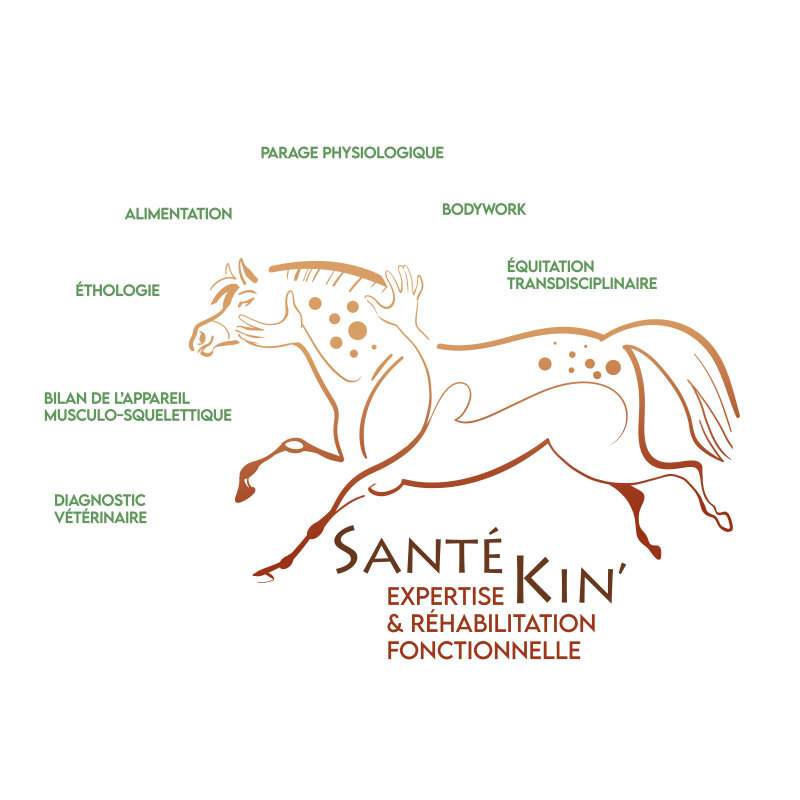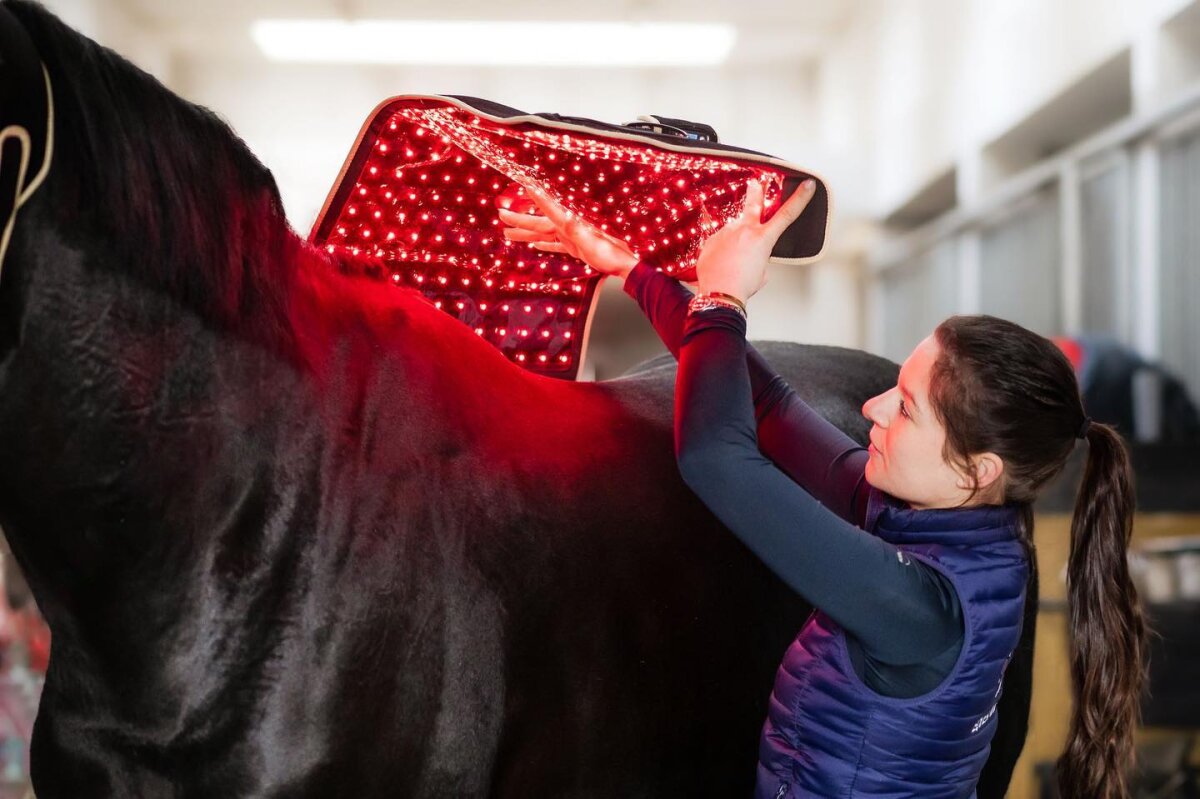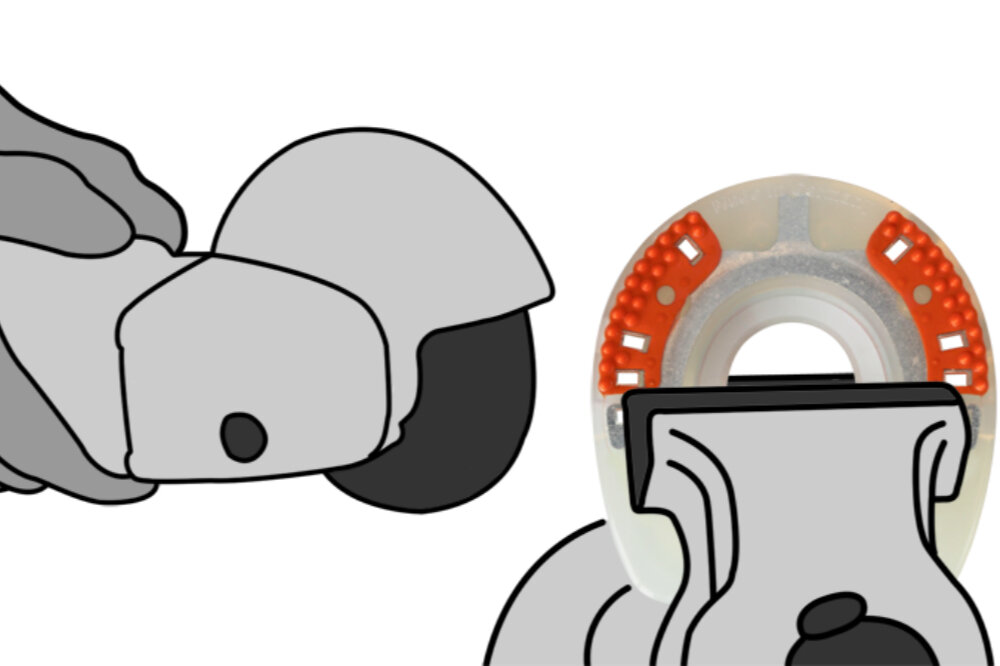Basic Knowledge about Duplo Composite Horseshoes
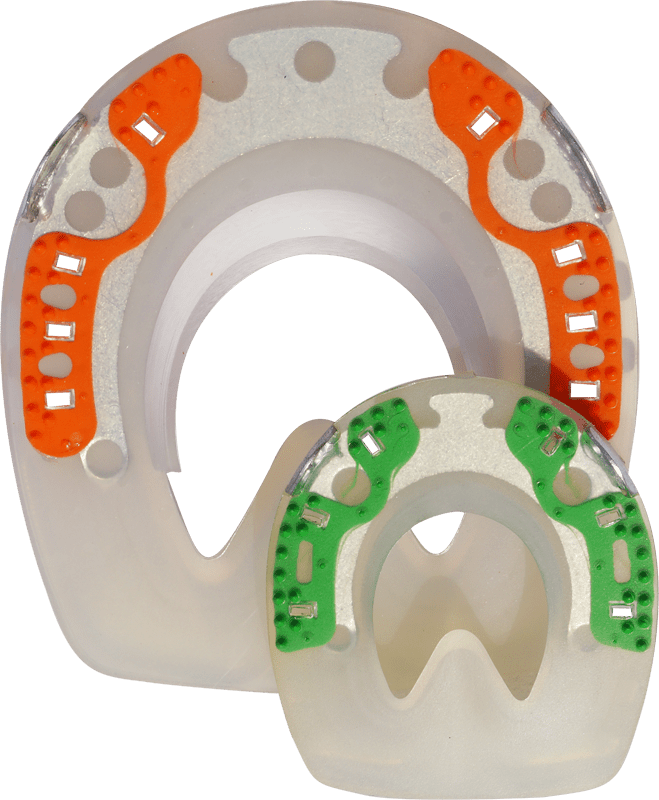
Standard and Extra
There are two lines of Duplo models which differ in the hardness of their synthetic material. The Standard models are made from relatively soft synthetic material. They are recognizable by their knob inlays (or small dots) in orange color. The Extra models are made from a slightly harder material than the Standard models. They are recognizable by their knob inlays (or small dots) in green color.
Exception: The Basic models don't have colored knob inlays; their degree of hardness is recognizable by an abbreviation (Std./Ex.) on the hoof side of the horseshoe.
Which horseshoe is better for your horse depends not only from individual preferences but also from the temperature: The softer synthetic material of the Standard models stays flexible during the cold season and keeps its shock-absorbing characteristics; the harder material of the Extra models, on the other hand, is more immune to heat and remains abrasion-resistant even during higher temperature.
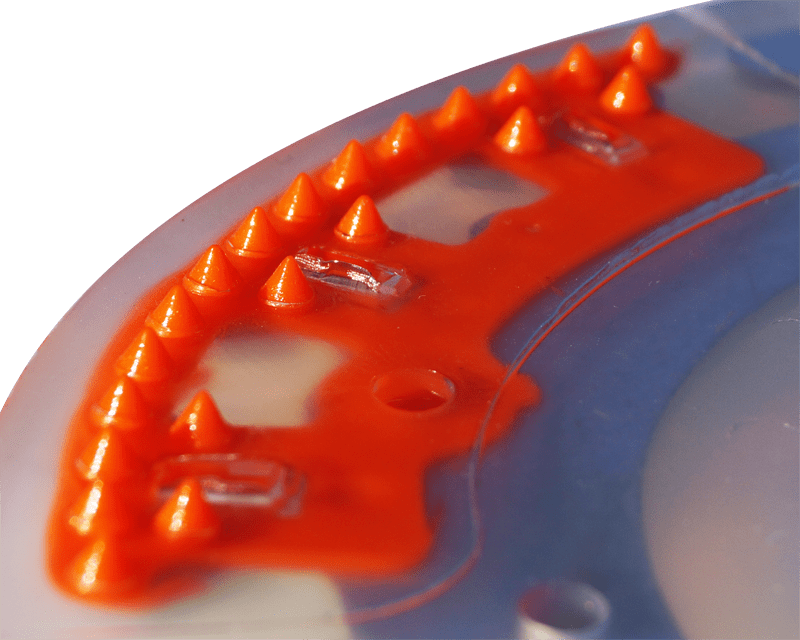
Knobs
Almost all Duplo Horseshoes are equipped with two knob arrays. The knobs are impressed into the weight-bearing surface of the hoof wall and thus help the horseshoe keep its position on the hoof. Experience has shown that two knob arrays are sufficient for this purpose even if there are no quarter clips - provided that the horseshoe has been carefully applied.
In case of sensitive horses with irregularly shaped or very flat hooves, we recommend removing the inner knobs so they won't exert pressure on the sole.

Synthetic Rim
Most Duplo models have a molded synthetic rim which considerably reduces the accumulation of snow, sand, and debris. Duplo Horseshoes are therefore also (but not only!) suitable for the use during the winter.
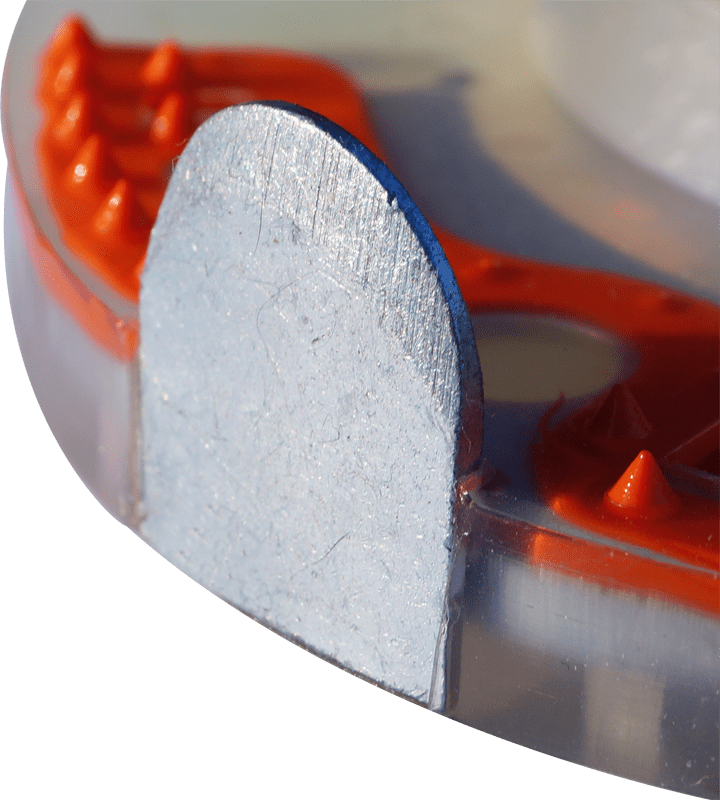
Quarter Clips
Many Duplo Horseshoes are clipped - simply because this concept has proven its worth. The clips facilitate the nailing process because the horseshoe is kept in position even before all nails are placed. During the regular shoeing cycle, they prevent the horseshoe from twisting or getting out of position.
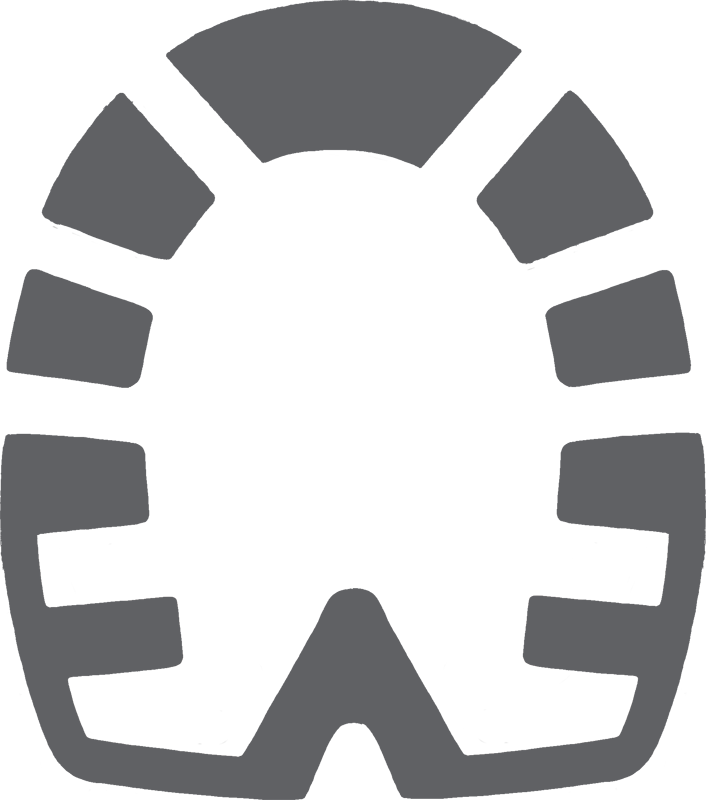
Profile
Every Duplo Horseshoe is profiled on its lower surface, but some models have a more pronounced profile which improves the anti-slide qualities of the horseshoe. We recommend profiled horseshoes for muddy or pebbly tracks where additional grip is necessary.
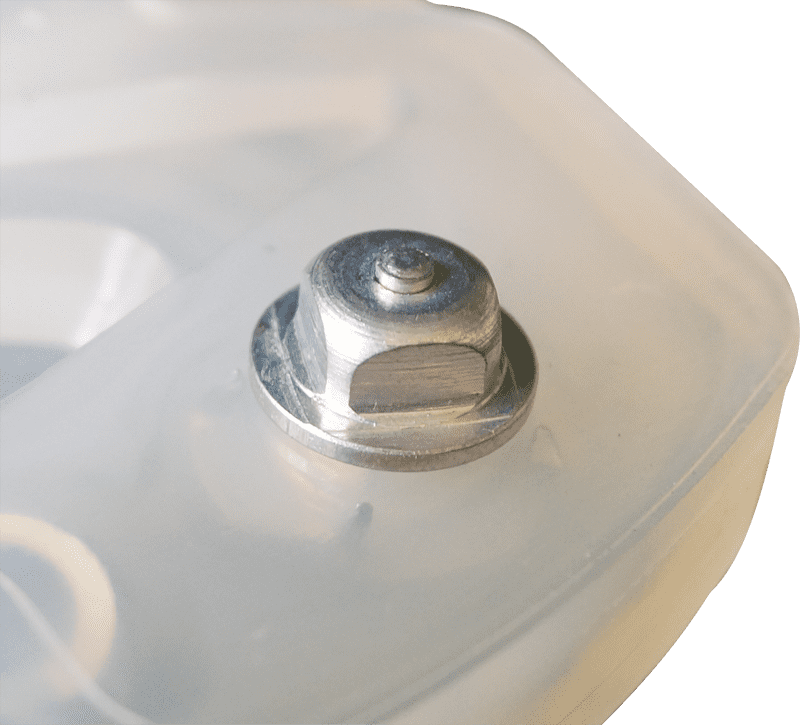
Threads for Studs
Thanks to their material and their profiled surface, Duplo Horseshoes are well protected against slipping. However, there are situations in which additional anti-slide equipment is necessary. That's why some Duplo models are equipped with two or four screw threads in which you can insert screw studs.
→ further information
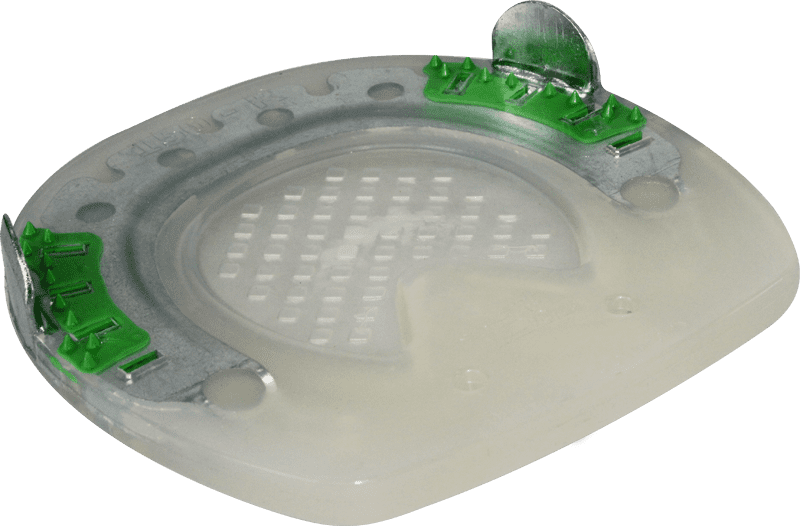
Closed Sole Area
The sole area of some Duplo models is completely closed or covered with an integrated synthetic grid. We often use these horseshoes for flat, sensitive hooves or in case of very stony trails - and of course, there are numerous therapeutic applications possible.
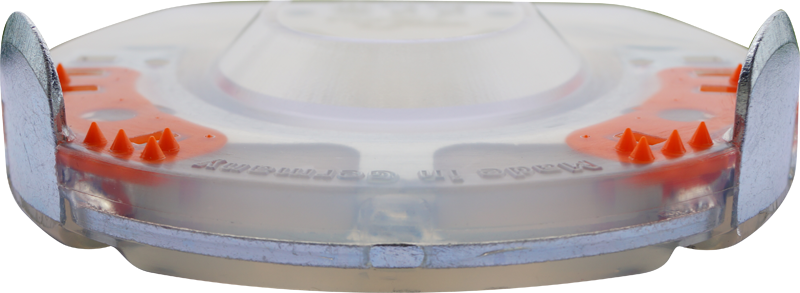
Reinforced Toe Area (Arizona)
The Duplo models with reinforced toe area have been developed in close cooperation with the Miller Ranch in Arizona. Being used for climbing rocks, the horseshoe is challenged a lot. The toe area is therefore bordered with steel which protects the synthetic material from being torn out.
→ further information
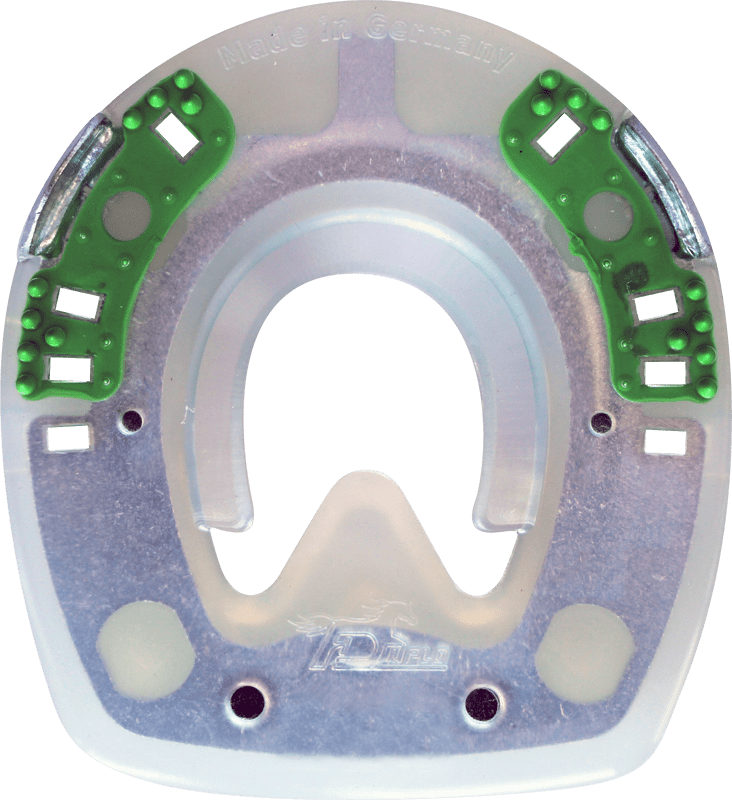
Ring-Shaped Metal Inlay
Some Duplo models have a ring-shaped metal inlay - quite similar to a traditional Heart Bar metal horseshoe. Thanks to that feature, those horseshoes are absolutely solid and torsion-free even during heavy use. They are ideal for horses that need an extremely solid and, at the same time, very shock-absorbing horseshoe.
→ further information
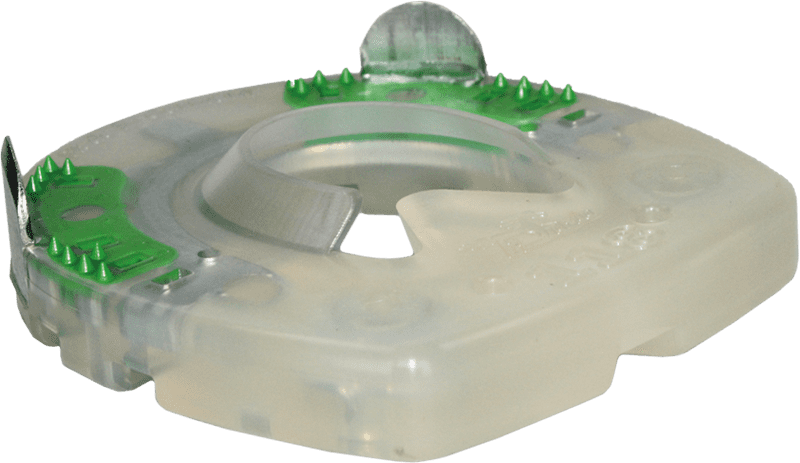
Particularly Solid Horseshoes
The Duplo Heavy Duty Shoe (HDS) is produced with a more massive metal inlay and a thicker synthetic layer. That way, it takes longer until the horseshoe is worn down even during intensive use (e.g. in case of draft horses or especially large hooves).

Straight Toe (STS)
Compared to a regular round Duplo Horseshoe, the toe area of the Duplo Straight Toe Shoe (STS) is slightly straightened. That way, it is possible to shift the horseshoe's position on the hoof backwards and thus facilitate an early breakover.
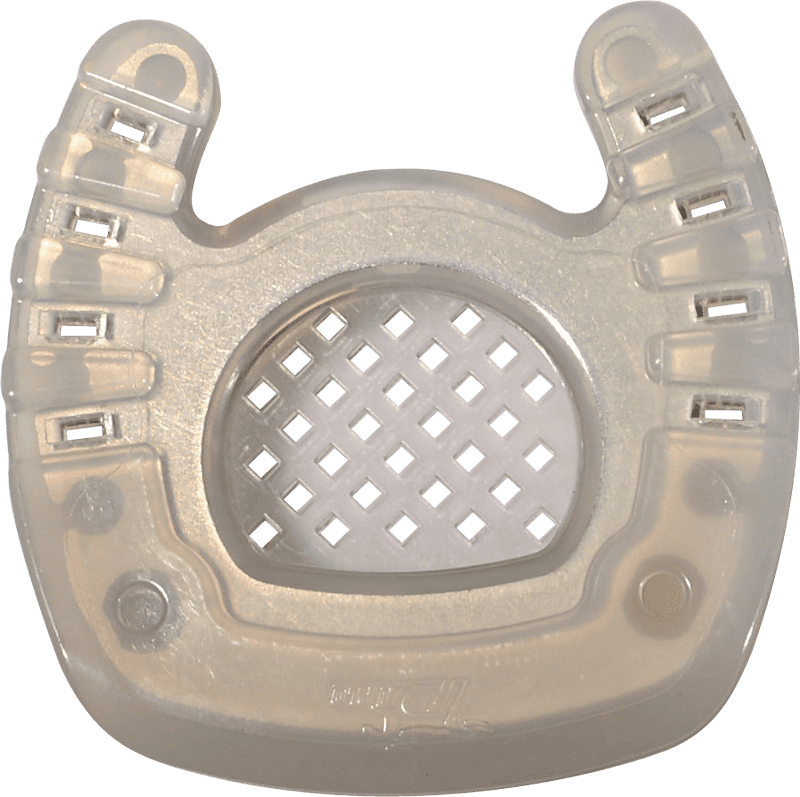
Open Toe
The various models of open-toed Duplo Horseshoes have been developed for the treatment of chronic laminitis. However, the daily routine has shown that the open-toed models are not only ideal for laminitis hooves but also in case of some other diagnoses.
→ further information
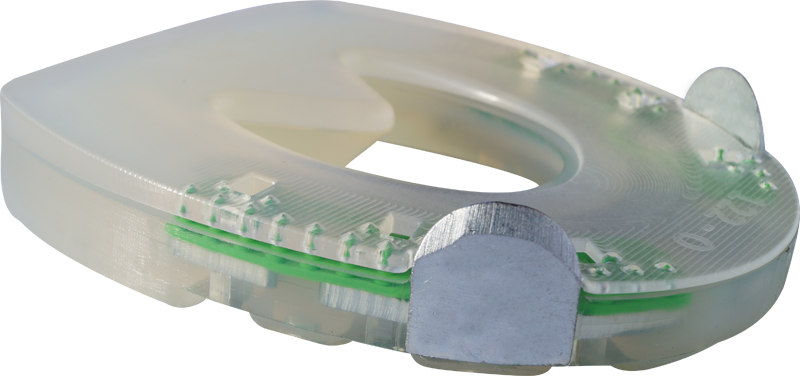
Wedges
Every clipped Duplo Horseshoe can be combined with a fitting wedge inlay. A horseshoe with wedge is used whenever a change of the hoof angle, combined with perfect shock absorbance, is called for. The Duplo Wedge is the ideal supplement to the Duplo Horseshoe in case of certain diagnoses.
→ further information

Glue-On Tabs
The Duplo has been conceived as a nailed horseshoe. However, if a hoof's condition doesn't allow nailing, Duplo Horseshoes can also be partly or completely glued on.
→ further information
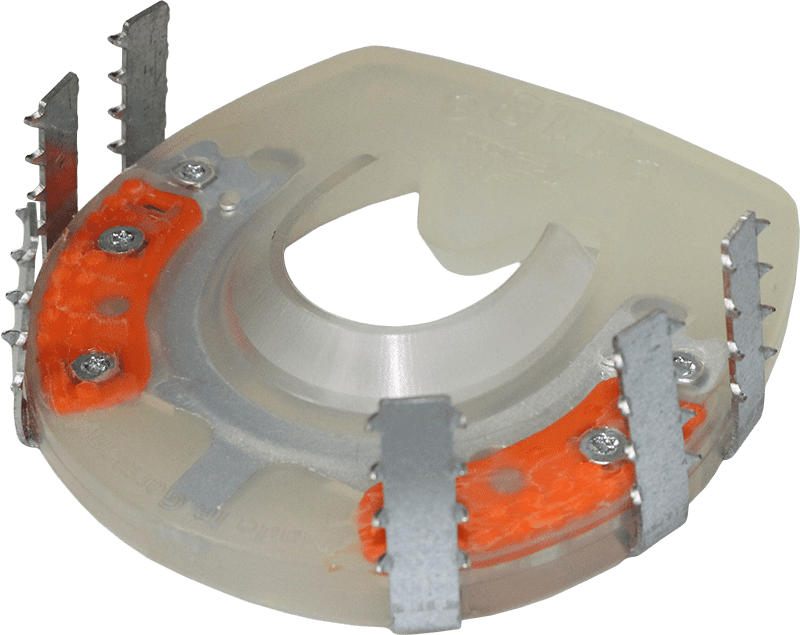
Cast Hooks
If the horn capsule needs absolute stability and rest, a Duplo Horseshoe can be fixated on the hoof by means of cast hooks and a cast bandage.
→ further information

 German
German French
French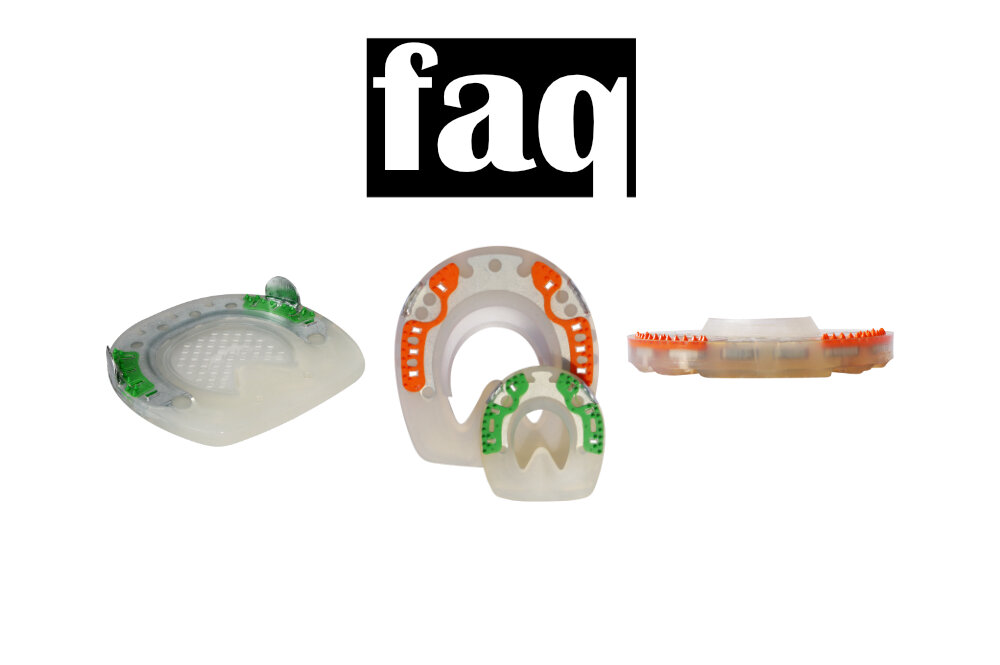
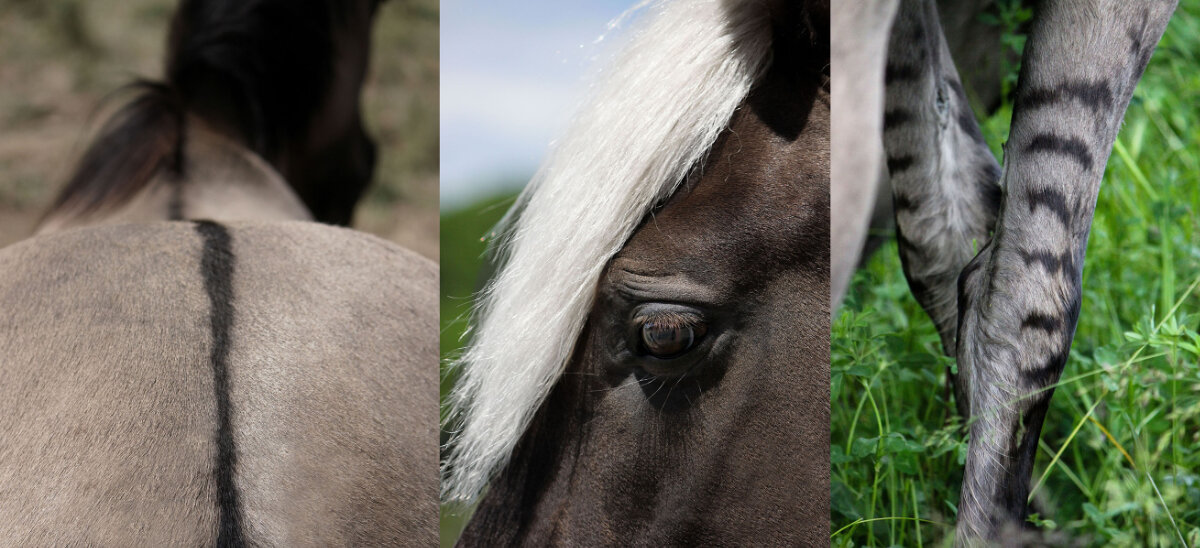
-for-horses.jpg)
